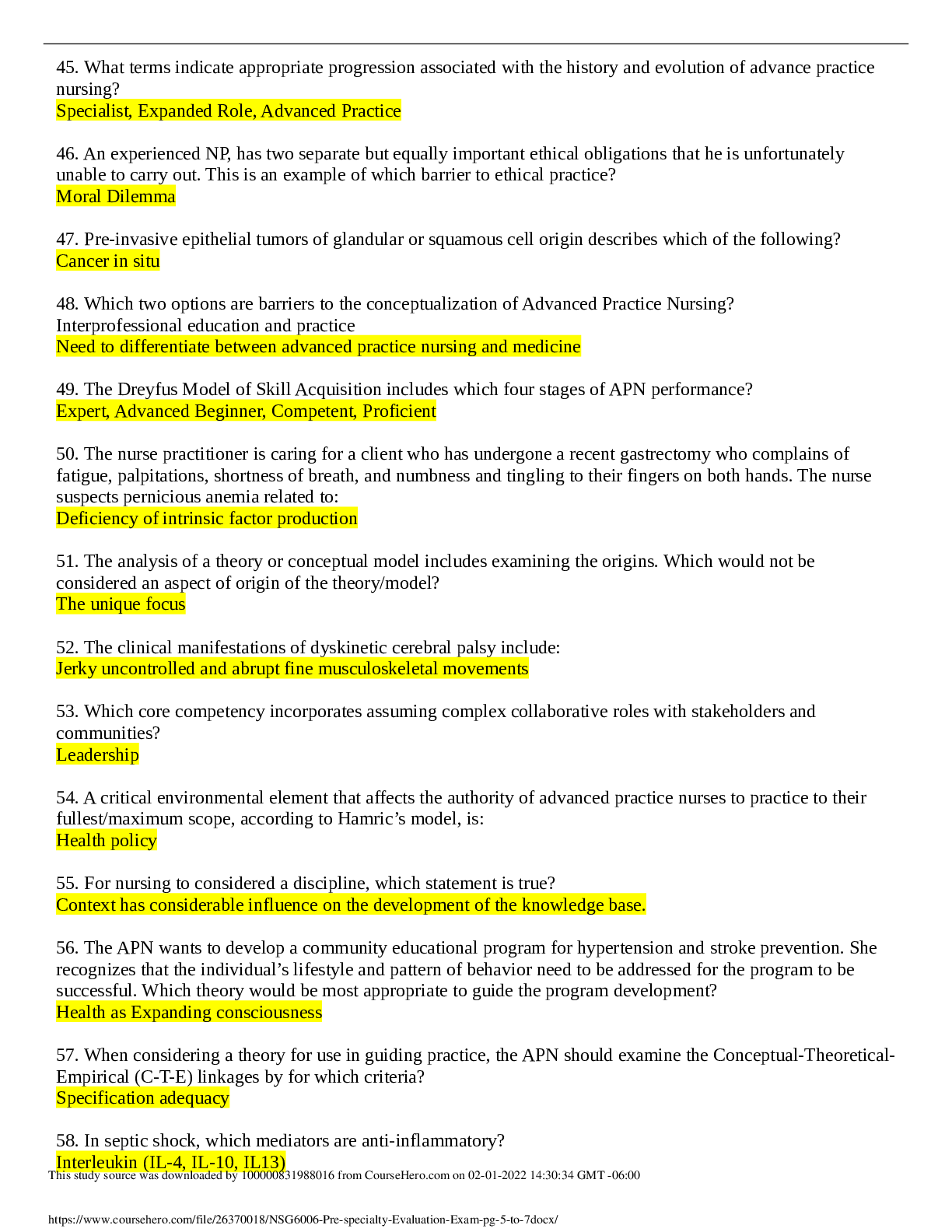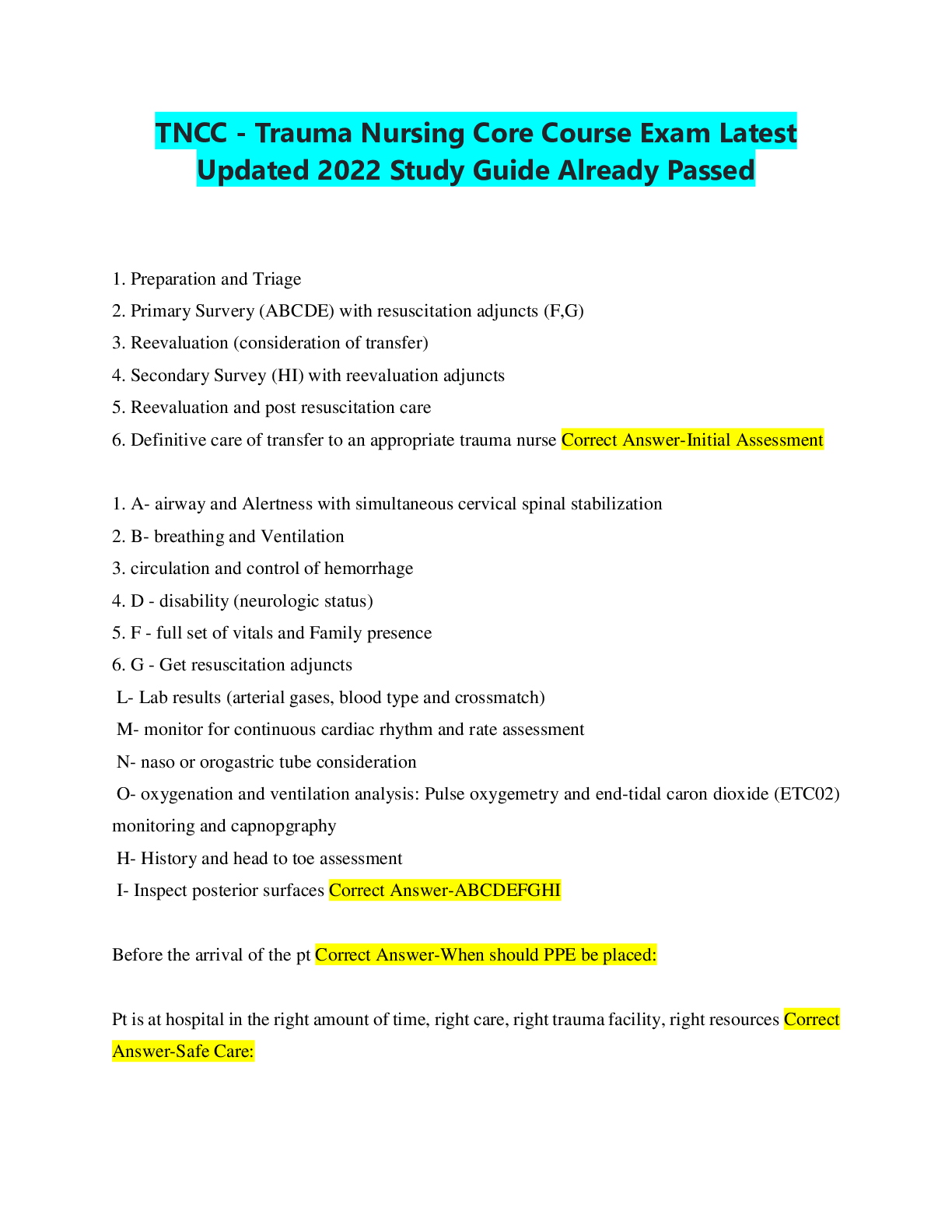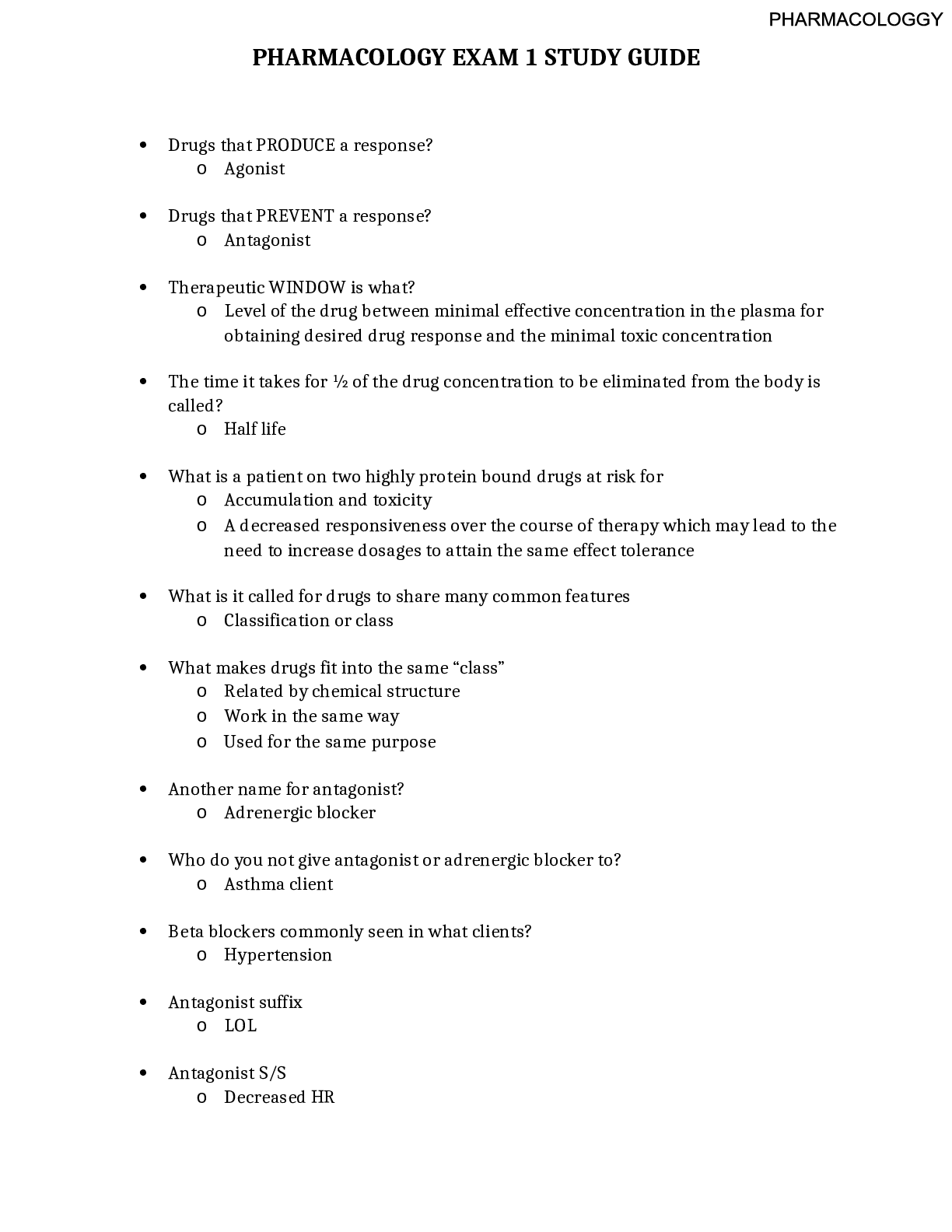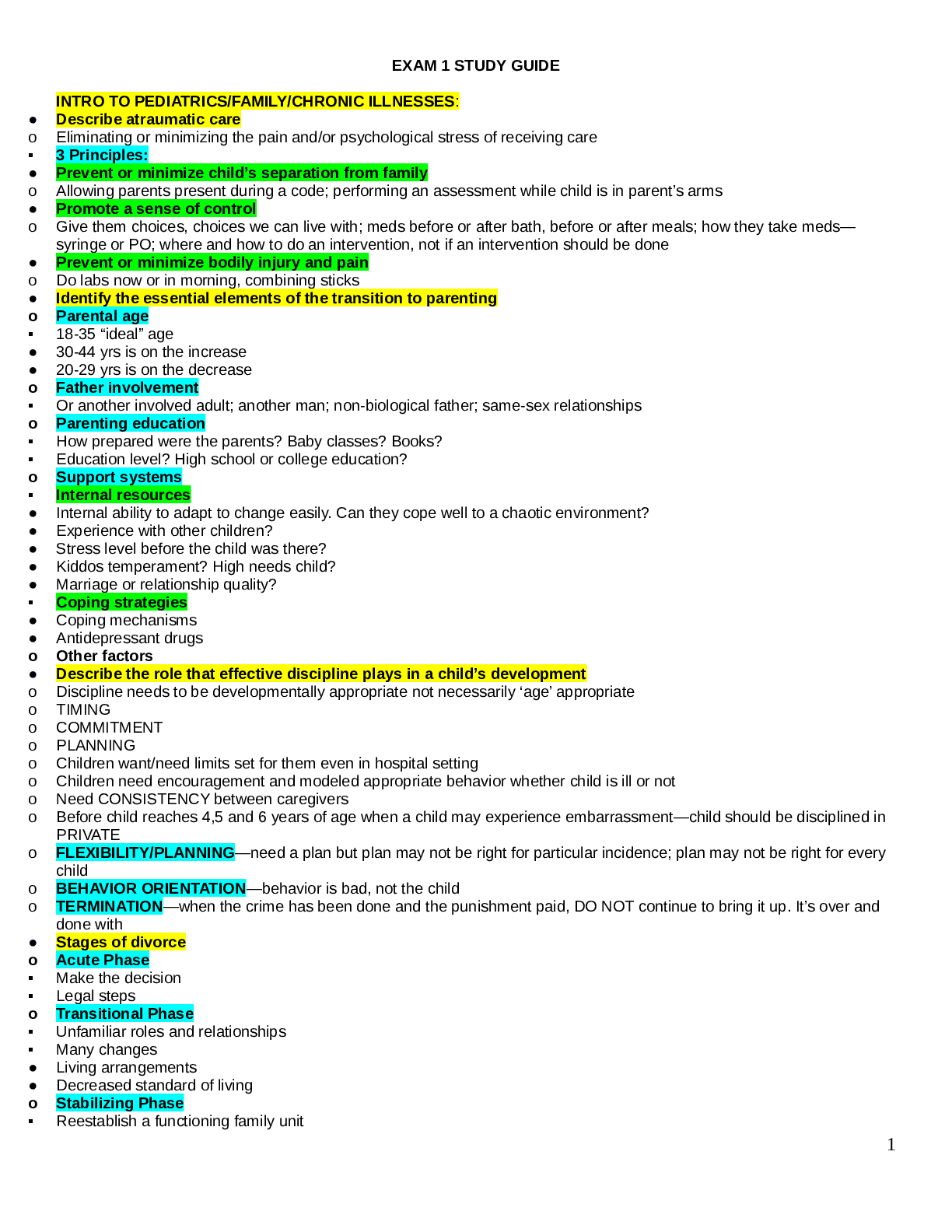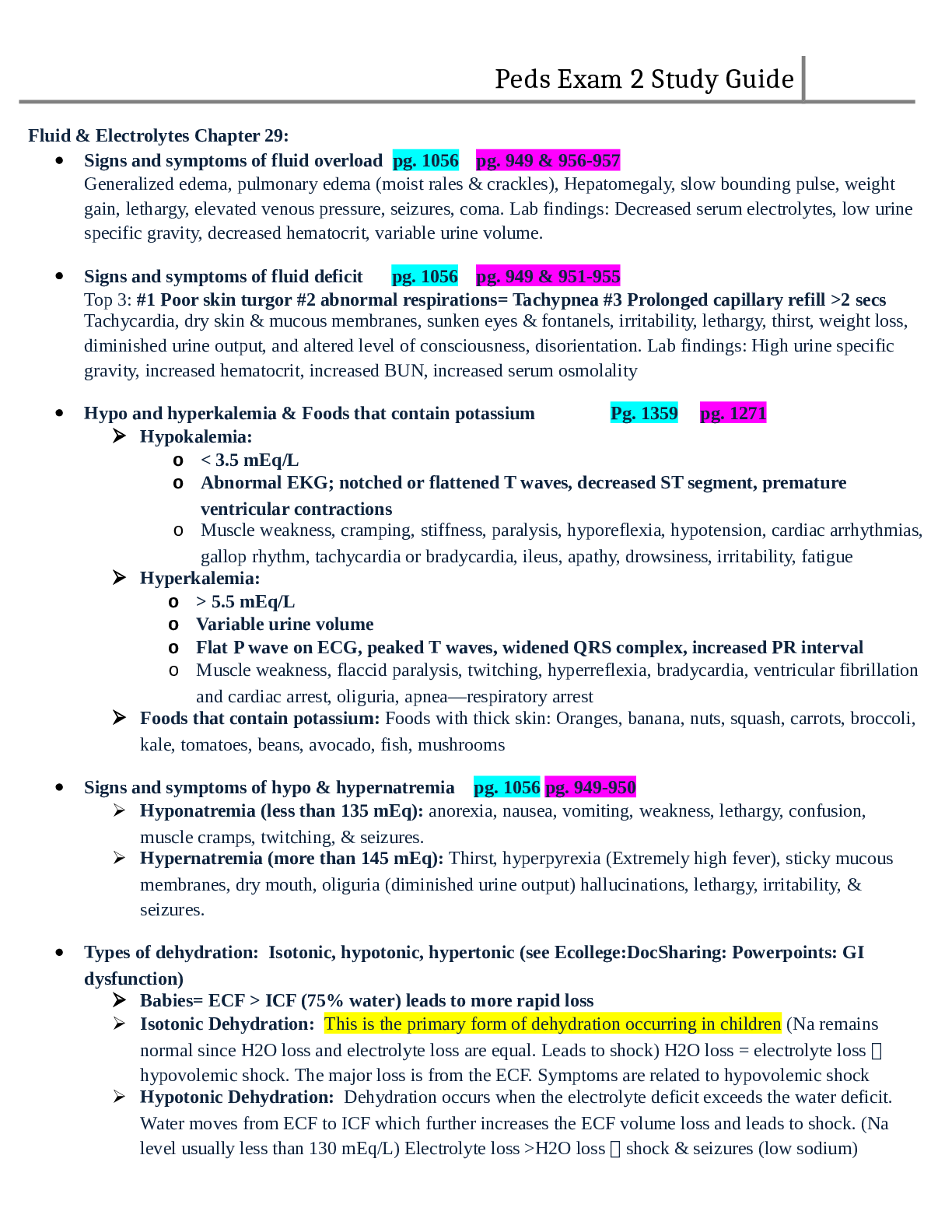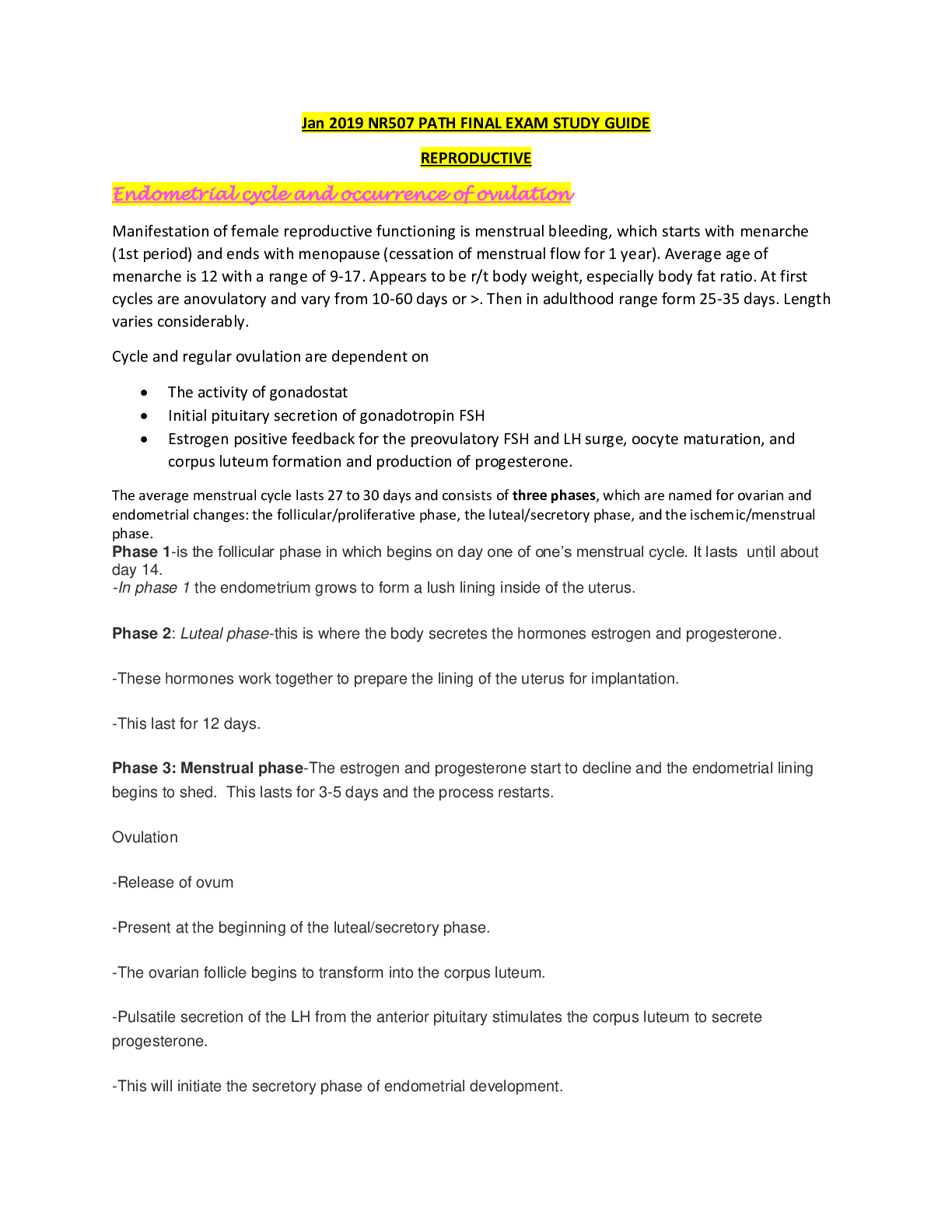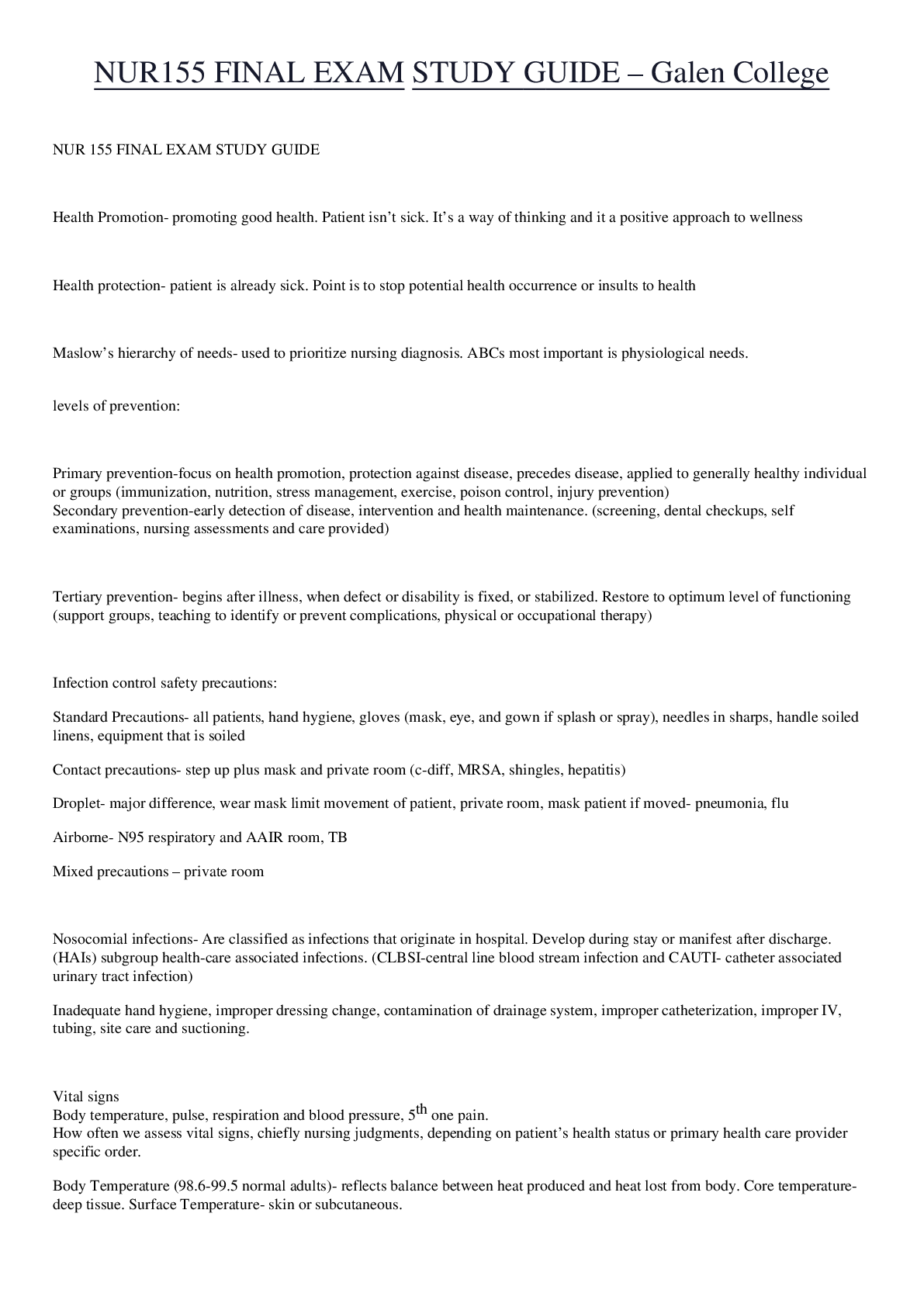*NURSING > STUDY GUIDE > NR 599 Final Exam Study Guide Latest Updated 2022 Already Graded A (All)
NR 599 Final Exam Study Guide Latest Updated 2022 Already Graded A
Document Content and Description Below
Final Exam Study Guide Midterm General principles of Nursing Informatics Scientific synthesis of information in nursing Concepts: computer, cognitive, information Knowledge W... isdom Scientific Underpinning The Foundation of Knowledge Model Computer science Cognitive science Information science Standard Terminology Informatics Competencies Information literacy Health literacy Meaningful Use Patient-centered Information Systems Clinical Decision Support Systems Electronic Medical Records Human-Technology Interface Health Information Technology Alarm fatigue Digital natives Information Literacy Competency Standards for Nursing HITECH Act TIGER-based Nursing Informatics Competencies Model Midterm Feedback Workarounds are ways invented by users to bypass the system to accomplish a task; usually indicate a poor fit of the system or technology to the workflow or user; devised methods to beat a system that does not function appropriately or is not suited to the task it was developed to assist with (McGonigle & Mastrian, 2018, p. 584). Workarounds negate expected practice protocols and are rarely necessary or appropriate means to ensure patient safety. Longevity is defined as usability beyond the immediate clinical encounter (McGonigle & Mastrian, 2018, p. 570). o HITCH ACT- become meaningful users of EHR. o American Recovery and Reinvestment Act of 2009 Communication systems improve productivity to promote interaction among healthcare providers and between providers and patients. Healthcare professionals overwhelmingly recognize the value of these systems to promote data and information processing. Examples of communication systems include call light systems, wireless telephones, pagers, email, and instant messaging, which have traditionally been forms of communication targeted at clinicians (McGonigle & Mastrian, 2018, p. 190). Final Exam Study Guide A major barrier to widespread adoption of educational opportunities for patients among American healthcare providers is the fact that reimbursement mechanisms for electronic health care interventions are inadequate or nonexistent. The goal of the interactive behavior change technology is to improve communication between patients and healthcare providers and to provide educational interventions that promote better disease management between office visits (McGonigle & Mastrian, 2018, p. 335). Once the technology is integrated into the organization, biomedical engineers can become valuable partners in promoting patient safety through appropriate use of these technologies. For example, in one organization, the biomedical engineers helped to revamp processes associated with the new technology alarm systems after they discovered several key issues: slow response times to legitimate alarms and multiple false alarms (promoting alarm fatigue) created by alarm parameters that were too sensitive. Strategies for addressing these issues included improving the nurse call system by adding Voice over Internet Protocol telephones that wirelessly receive alarms directly from technology equipment carried by all nurses, thus reducing response times to alarms; feeding alarm data into a reporting database for further analysis; and encouraging nurses to round with physicians to provide input into alarm parameters that were too sensitive and were generating multiple false alarms (McGonigle & Mastrian, 2018, p. 297). This deluge of information available via computers must be mastered and organized by the us. er if knowledge is to emerge. Discernment and the ability to critique and filter this information must also be present to facilitate the further development of wisdom (McGonigle & Mastrian, 2018, p.53). Nurses have historically gathered and recorded data, albeit in a paper record. There is no doubt that nursing experiences build knowledge and skill in nursing practice, but paper-based documentation has hindered the ability to share knowledge and to aggregate experiences to build new knowledge (McGonigle & Mastrian, 2018, p. 106). Healthcare providers need to embrace the Internet as a source of health information for patient education and health literacy. Patients are increasingly turning there for instant information about their health maladies. Health-related blogs (short for weblog, an online journal) and electronic patient and parent support groups are also proliferating at an astounding rate. Clinicians need to be prepared to arm patients with the skills required to identify credible websites. They also need to participate in the development of well-designed, easy-to-use health education tools. (McGonigle & Mastrian, 2018, p. 330). Patients are occasionally interested in interacting with others who have the same or similar conditions, and some healthcare organizations are providing the information necessary to help them connect. This socalled peer-to-peer support is especially popular with patients who have cancer diagnoses, diabetes, and other chronic and debilitating conditions (McGonigle & Mastrian, 2018, p. 328). Final Ethical decision making Bioethical standards Telehealth Medical Applications Medical Devices FDA Oversight for Medical Devices Privacy Confidentiality Cybersecurity Computer-aided translators HIPPA ICD-10 Coding Evaluation and Management Coding Final Exam Study Guide Reimbursement Coding Clinical Support Tools Workflow analysis Ethical decision making This refers to the process of making informed choices about ethical dilemmas based on a set of standards differentiating right from wrong. The decision making reflects an understanding of the principles and standards of ethical decision making, as well as philosophical approaches to ethical decision making. Requires a systematic framework for addressing the complex and often controversial moral questions. Guiding principles: respect for autonomy nonmaleficence- duty not to inflict harm as well as to prevent and remove harm beneficence - the duty to do good, as well as the active promotion of benevolent acts. justice- Fairness, treatment of everyone in the same way. involves actions in which like cases should be treated alike. Bioethical standards 1) autonomy-the right to choose for himself or herself. ability to make a choice free from external constraints. 2) freedom3) veracity-right to truth. the obligation to tell the truth and not to lie or deceive others. 4) privacy-the right of privacy avoids conflict and promotes harmony 5) beneficence-actions performed that contribute to the welfare of others 6) fidelity-right to what has been promised. duty to be faithful to one's commitments. Benchmark: the process of comparing data to other reliable sources, internally and externally Criterion Rule Norm Principle Cardinal virtues: wisdom, courage, self-control and justice Telehealth- Telecommunication technologies used to deliver health-related services or to connect patients and healthcare providers to maximize patients’ health status. A relatively new term in our medical/nursing vocabulary, referring to a wide range of health services that are delivered by telecommunications-ready tools such as the telephone, videophone, and computer 3 broad methods of digital care delivery that are "away" from the patient-means "healing at a distance" telemedicine (stationary scheduled remote diagnostics of health status) Final Exam Study Guide remote management/monitory/coaching (stationary home or facility-based, with scheduled and asneeded remote transmission of health status Mobile health (mHealth) "community" groups/social media (wearable mobile patient-generated health data with scheduled and as needed remote transmission of health status Clinical uses a) transmitting clinical date for assessment, diagnoses, or disease b) promoting disease prevention and good health c) using telephone and videographic technologies to provide health advice in emergent cases d) using real time video i.e: exchanging health services or video conferencing Medical Applications Apps Providing Access to Electronic Copies Apps for General Patient Education Generic Aids or General Purpose Apps Apps as Educational Tools Apps Automating Office Operations Medical Devices Some mobile apps may meet the definition of a medical device but because they pose a lower risk to the public, the FDA intends to exercise enforcement discretion over these devices (meaning it will not enforce requirements under the FD&C Act). One example is a mobile app that makes a light emitting diode (LED) operate. If the manufacturer intends the system to illuminate objects generally (i.e., without a specific medical device intended use), the mobile app would not be considered a medical device. If, however, through marketing, labeling, and the circumstances surrounding [Show More]
Last updated: 2 years ago
Preview 1 out of 10 pages

Buy this document to get the full access instantly
Instant Download Access after purchase
Buy NowInstant download
We Accept:

Reviews( 0 )
$11.00
Can't find what you want? Try our AI powered Search
Document information
Connected school, study & course
About the document
Uploaded On
Apr 18, 2022
Number of pages
10
Written in
Additional information
This document has been written for:
Uploaded
Apr 18, 2022
Downloads
0
Views
183




